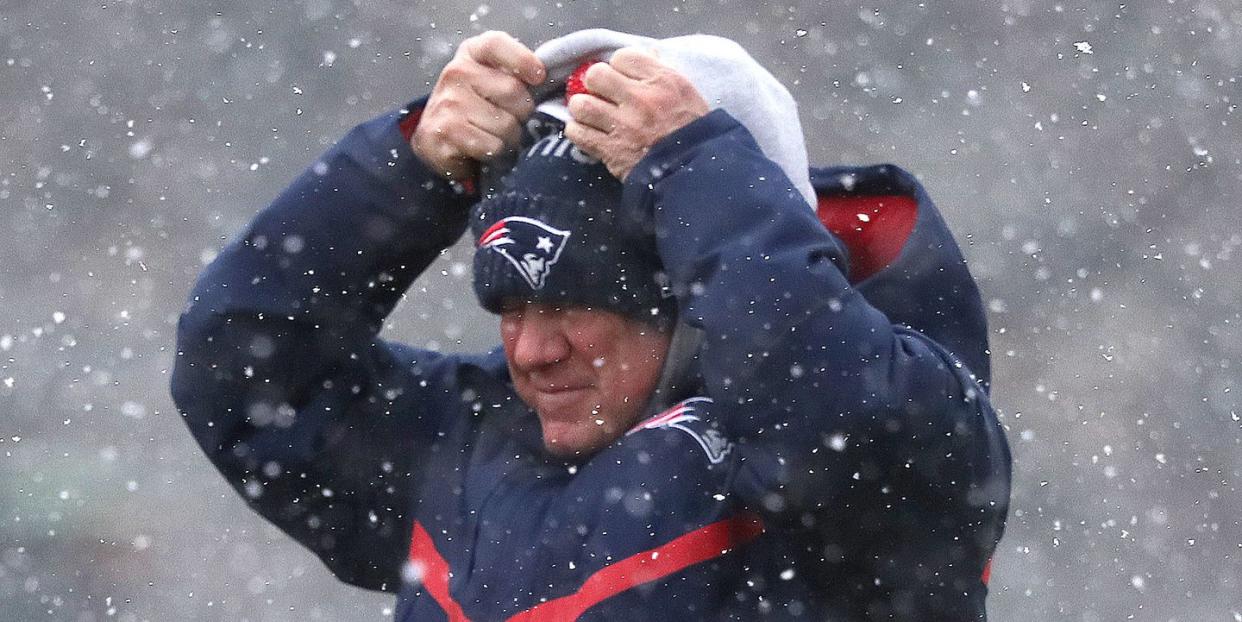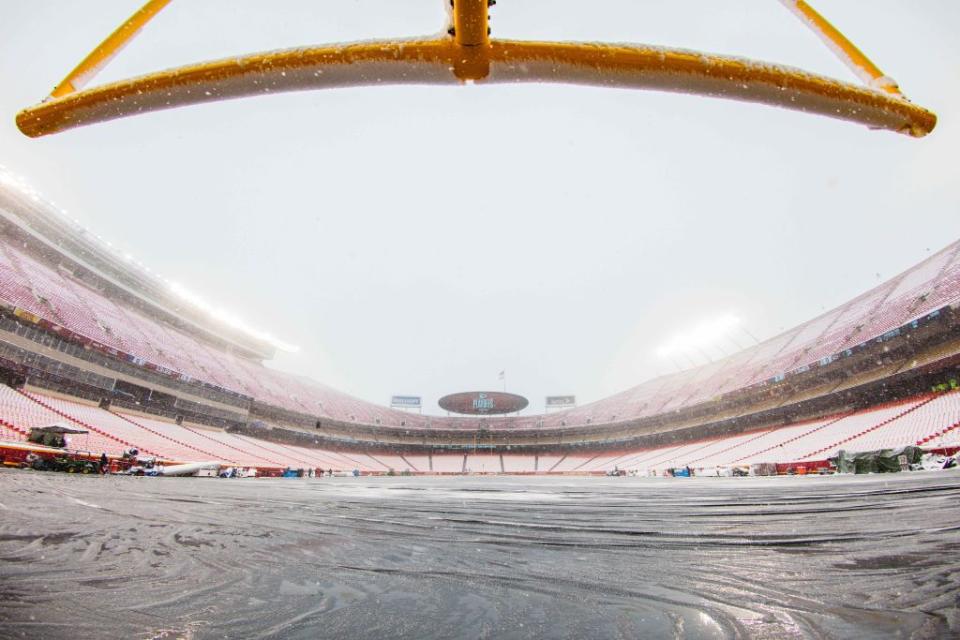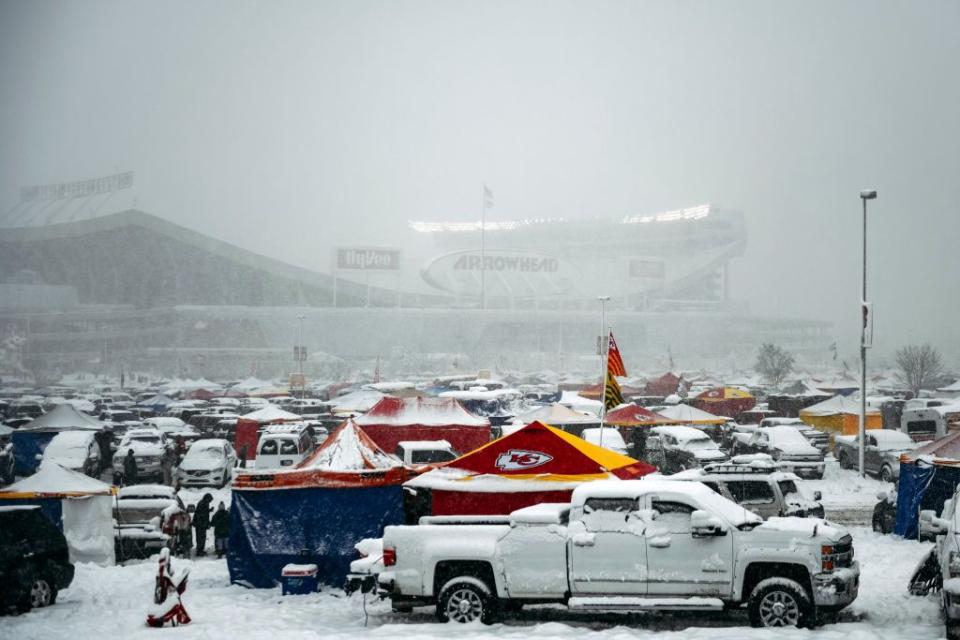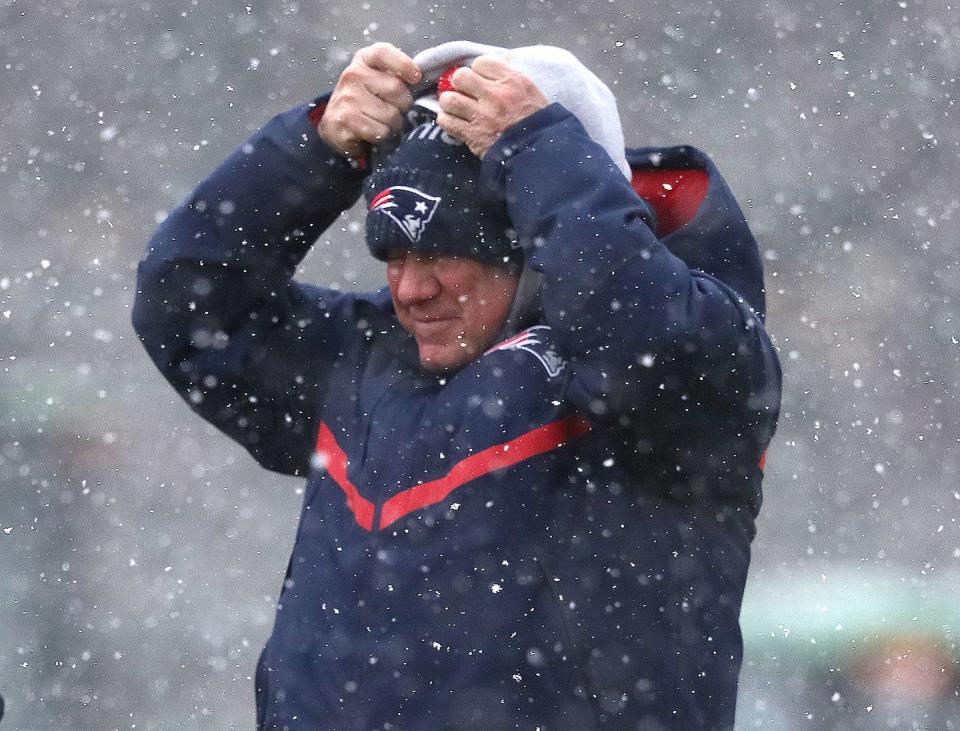Football Stadiums Have a Few Tricks for Keeping Players and Coaches Warm During Freezing Games

Football and bad weather go hand in hand, as NFL lore is replete with myths about “bear weather” and “the frozen tundra of Lambeau Field.” However, the modern NFL uses a number of tricks to keep its players warm during even the most frigid football game day.
Dive deeper. ➡ Get unlimited access to the weird world of Pop Mech .
Unfrozen Tundra

The most important piece that will be heating up Arrowhead Stadium on Sunday will be invisible to the TV audience. In 2016, the Chiefs installed a $2.2. million under-field heating unit. Three-million-BTU boilers hidden underneath the stadium bleachers pump heat through four-inch pipes tucked underneath the sandy underbelly of the playing surface to prevent the field from freezing.
Despite its frozen reputation, Green Bay’s Lambeau Field actually was the first in the NFL to install such a hydronic heating system, burying pipes six inches to a foot under the turf and filling them with warmth to keep the soil and roots from freezing. A host of other stadiums, Arrowhead included, would follow in the years to come.
Through years of trial and error, Lambeau groundskeeper Allen Johnson has learned that he likes his system humming along at 38 degrees—just above freezing, but still cold enough to let the grass begin to "harden off and get tougher." "You could remove the soil and see nothing but white tubing," Johnson says. "The main goal is to keep it thawed out. There is not a difference [in] softer soil between 40 and 50 degrees."
If it gets too chilly in the days leading up to a Packers game, Johnson adds a tarp, props it up, and blows warm air under it, creating a blanket of warm air to keep the surface dry. "When it gets really bitter up here, you can't get the surface totally warm because you can't control the ambient air. There was a time in 2007 when I brought the heat system up and maxed it out to battle the bitter cold. It was working overtime that day."
Every groundskeeper has a different strategy. The Baltimore Ravens crew warms its soil to nearly 50 degrees and Philadelphia once pushed its field to 60 degrees. The Chiefs will likely target 50 degrees, ensuring the field isn’t frozen (the grass tips may frost, however) and keeping the playing surface softer and safer.
Heat Your Seat!

The field isn’t the only surface that gets a toasty touchup for an ice-cold game. The players’ backsides get a boost, too.
The most popular heated bench in the NFL was originally built by Frank Floyd Jr.'s Reliable Construction Heaters of Cleveland, which in 2015 was purchased by Tioga Air Heaters. Floyd, who invented the heated bench, uses hollowed fiberglass and propane- or natural-gas-powered blowers running at 170,000 Btus to keep the player posteriors toasty warm.
The proprietary bench design includes trays that slide out, allowing the players to stand on them and have warm air blow up at them, creating the "Marilyn Monroe effect" when wearing a parka. The extra "hot hats" feature allows players to place helmets on posts on the back of the bench and keep the air-filled bladders inside the helmet soft.
If players get enough of the heated benches, they can stand between kerosene-powered blowers pumping heat out at up to 600,000 Btus, one on either end of the sidelines, pointing inward. These blowers keep the sideline over 50 degrees between the two 30-yard lines, even when the temperature outside falls far below freezing.
Dress in Layers

But what happens when players venture onto the field and away from the comfort of the benches? That’s when you get a nice mix of old-school trickery and chemically enhanced help.
Players will certainly layer their apparel more rigorously for cold contests, with fleece turtlenecks a popular option and plenty of sweat-wicking cold-weather gear to keep players dry. Long underwear also slides nicely under football pants.

Then comes the gimmicks. Players still wanting to show off their bare arms may rub Vaseline on their arms to ward off the wind, while others will spray Right Guard to make sure the body doesn’t perspire—keeping skin dry and, therefore, warmer. Those chemically activated heat packs that warm when the oxygen in the air activates them can be found by the hundreds throughout a NFL sideline. Players will fill hand-warmer muffs, put the packs inside helmets, stuff them in their uniform, and even get them inside cleats and gloves.
The 76,000-plus fans inside Arrowhead Stadium won’t have access to the same amenities as the players, but they may use some of the same strategies to get through a monumental game being played in miserable conditions.

Follow Tim Newcomb on Twitter at @tdnewcomb.
You Might Also Like
